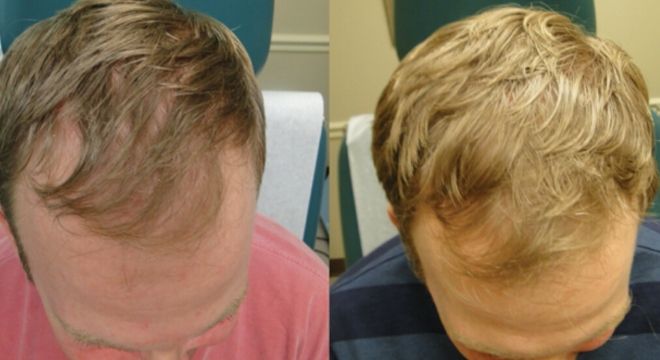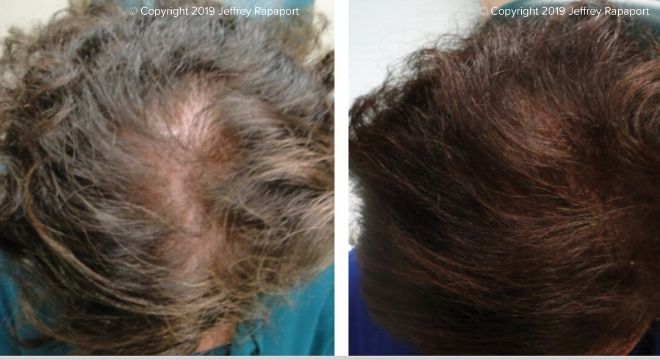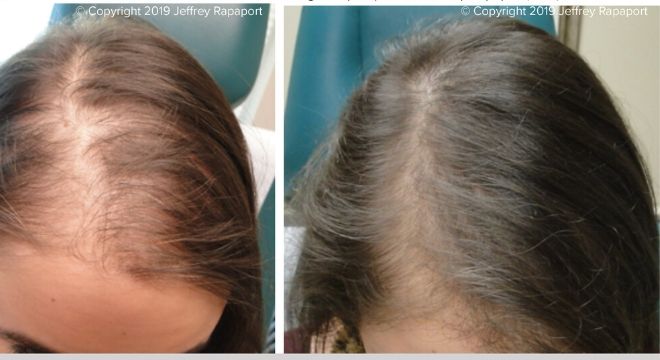If you’ve experienced hair loss, you’ve probably evaluated potential options to stop the process or, at the very least, looked into potential ways to slow the process. Historically solutions have been difficult to find and results were inconsistent at best. For example hair plugs, implanted directly in one’s scalp, can be effective but the process is very involved and results can often become obvious over time as hair continues to thin. There are also a wide variety of product-based regimens that use medicated shampoos and creams, with widely varying results. Regardless of the approach, it has been an industry marked by mixed results and outcomes.
Today that is no longer the case thanks to recent breakthroughs in the biology around understanding hair loss. Through Platelet Rich Plasma (PRP) therapy, a treatment that targets and treats hair restoration, individuals suffering from hair loss are finally finding a consistent solution.This breakthrough technology has earned a reputation as being a game changer in the aesthetic industry.
Here’s everything you need to know about PRP for hair restoration.
What Is Platelet Rich Plasma Hair Restoration?
Platelet-rich plasma (PRP) for hair restoration is a treatment where a patient’s blood is drawn, placed in a centrifuge, and spun to separate red and white blood cells from plasma. The patient’s own plasma is then directly injected into the scalp to promote growth and healing.
Although commonly used for hair loss, PRP is actually being used in other areas of the body as well, particularly in treating sports injuries to ligaments, tendons and muscles, as well as being injected cosmetically in place of traditional fillers and applied to the face during microneedling.
How It Works
Platelet-rich plasma (PRP) for hair restoration is the use of autologous blood plasma to promote hair growth and reverse hair loss. The PRP is derived from the client’s blood, which is then conditioned to remove red blood cells, leaving behind a large supply of platelets. Platelets are necessary for blood clotting, but they also work to enhance immune function and treat injury along with inflammation.
Platelets are used to heal damages in the scalp that prevent hair growth. Increasing blood flow to the scalp is necessary to increase its health and stimulate the hair follicles. PRP for hair restoration can be used alone or combined with other hair growth treatments like scalp massaging or topical drugs.
Who Should Use PRP
PRP is ideal for both men and women who suffer from long-term hair loss and balding. PRP may not be effective for individuals who utilize blood thinners, are heavy smokers or abuse drugs or alcohol. PRP may also not be effective for individuals who suffer from underlying medical conditions such as cancer or sepsis. However, if you do not fall into any of these categories, PRP therapy can be an effective treatment to combat hair loss.
Risks
There are few known risks since the main component is the client’s own blood. Side effects are possible however, including the potential for blood loss, scaring or infection at the point of injection. In these cases, patients may feel minor to severe pain if the injections are too deep into the scalp. These side effects are possible, but are not necessary and do not typically occur when the treatment is performed correctly. If you are considering PRP therapy, it is important to notify your doctor and ensure there are no known concerns related to anesthetics prior to undergoing treatment.
Results
There have been a number of smaller studies done recently that indicate PRP does create hair growth in treated individuals. According to some scientific studies, this procedure is also effective at increasing the thickness of hair so that hair grows back fuller and thicker.
It is important to note that PRP does not cure the underlying cause of hair loss so multiple treatments may be needed over time to maintain results.
PRP hair restoration is a great option for people who suffer from all forms of hair loss. The treatment is a unique alternative to hair transplants, which are both riskier and more expensive.


